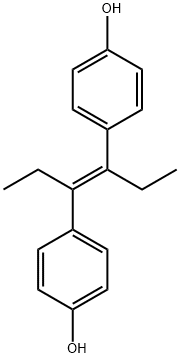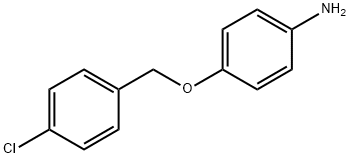Diethylstilbestrol , 99% , 56-53-1
Synonym(s):
(E)-3,4-Bis(4-hydroxyphenyl)-3-hexene;DES;Desmin;Stilbestrol
CAS NO.:56-53-1
Empirical Formula: C18H20O2
Molecular Weight: 268.35
MDL number: MFCD00002373
EINECS: 200-278-5
| Pack Size | Price | Stock | Quantity |
| 1G | RMB40.80 | In Stock |
|
| 5G | RMB120.00 | In Stock |
|
| 25G | RMB519.20 | In Stock |
|
| 100g | RMB2062.40 | In Stock |
|
| others | Enquire |
PRODUCT Properties
| Melting point: | 170-172 °C(lit.) |
| Boiling point: | 351.51°C (rough estimate) |
| Density | 1.1096 (rough estimate) |
| refractive index | 1.4800 (estimate) |
| storage temp. | 2-8°C |
| solubility | methanol: 0.1 g/mL, clear, faintly yellow |
| form | Crystalline Powder |
| pka | pKa 9.02(H2O t=25 I=0.025) (Uncertain) |
| color | White to almost white |
| biological source | rabbit |
| Water Solubility | PRACTICALLY INSOLUBLE |
| Merck | 13,3155 |
| BRN | 2056095 |
| Stability: | Isomerizes rapidly in Benzene, Chloroform, and Ether.
Keep Shielded from light. |
| CAS DataBase Reference | 56-53-1(CAS DataBase Reference) |
| IARC | 1 (Vol. 21, Sup 7, 100A) 2012 |
| NIST Chemistry Reference | Diethylstilbesterol(56-53-1) |
| EPA Substance Registry System | Diethylstilbestrol (56-53-1) |
Description and Uses
Diethylstilbestrol (DES) is a synthetic estrogen receptor agonist that was prescribed to pregnant women in the late 1930s. It was banned in 1971 because of possible links to increased risk of breast cancer in mothers along with congenital abnormalities and increased risk of cancer in offspring. DES is structurally related to, and is as potent as, estradiol in most assays, with a longer half-
Diethylstilbestrol is a synthetic nonsteroidal estrogen that was formerly used in estrogenic hormone therapy (for menstrual disorders, postpartum breast engorgement, postcoital contraceptive, prevention of spontaneous abortion) and in chemotherapy of various cancers, including postmenopausal breast cancer and prostate cancer. It was also used in biomedical research and veterinary medicine (growth promoter for cattle and sheep; veterinary drug to treat estrogen deficiency disorders).
Safety
| Symbol(GHS) |    GHS07,GHS08,GHS09 |
| Signal word | Danger |
| Hazard statements | H315-H319-H335-H350-H360FD-H410 |
| Precautionary statements | P202-P261-P273-P302+P352-P305+P351+P338-P308+P313 |
| Hazard Codes | T,N |
| Risk Statements | 45-61-36/37/38-51/53-40 |
| Safety Statements | 53-36/37/39-45-60-61-36/37 |
| RIDADR | UN 3077 9/PG 3 |
| WGK Germany | 3 |
| RTECS | WJ5600000 |
| F | 10 |
| HazardClass | 6.1(b) |
| PackingGroup | III |
| HS Code | 29072990 |
| Hazardous Substances Data | 56-53-1(Hazardous Substances Data) |
| Toxicity | LD50 oral in rat: > 3gm/kg |




